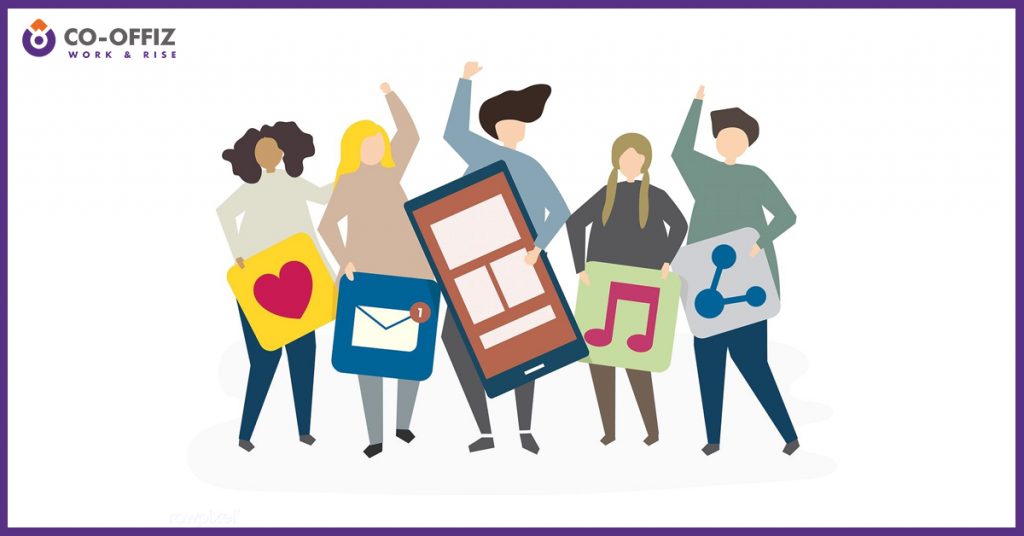How to turn your Customers into Brand Marketers
Personalize conversations
Importantly, when it is quite necessary to respond quickly, a mere standard automated text may not be sufficient. Bots can only help to show your customers that you are concerned about their problem when you personally can follow up soon afterwards with human correspondence.
Social media is a far more personal platform for connecting with your customers. It’s where friends and family members interact with your followers as well. People expect to be comfortable in their discussions with brands as a message to a friend. It makes sense to embrace personalization for brands to build connections on social media.
When you’re communicating directly with customers, whether it be new or loyal, you should always try to use their first name when possible. You need to be friendly and let your clients know that you’re there for them for future needs too. And when signing off, don’t forget to post a sign off the comment with your team or company’s name.
Make sure you let your customer know after the conversation that you’re not going anywhere. Leave them feeling happy that they’ve been talking to you.
Encourage Customers To Give Testimonials
Customer feedback is a flexible “thing” that the organization can exploit in two highly valuable ways.
Customer feedback and reviews can mainly be used to enhance the products, services, and overall user experience. After all, what better way to improve your ability to serve your clients than just listening to what they have to say?
However, you can also include any positive references to your brand in your moving forward WOM (Word-of-Mouth) marketing initiatives.
This approach is like a “hybrid” between WOM and internally developed marketing content, as it is when promoting UGC (User Generated Content) on your own channels.
So that when authentic feedback will be provided by your participating customers, your team will have much more control over how this information is presented to your overall audience.
There are, of course, a number of ways in which the company can show such positive feedback on their websites.
- It may be in the form of an individual product review presented on the product page
- In-depth case studies and video testimonials
- Value-specific quotes sprinkled throughout your website
Loyalty Programs
Running loyalty programs for your customers is one of the best and easiest ways to ensure that your customers are engaged, appreciated, and continue to make purchases. While loyal consumers who genuinely enjoy the goods or products don’t really need incentives to make future purchases, loyalty programs will work to make them feel good and may compel them to make repeat purchases very often.
Loyalty programs can be set up in various ways. Some of the most common ways are based on a point system corresponding to the amount of money spent by third parties, memberships, or value-based programs. In each of these instances, the systems become a way to store customer data, enabling the creation of personalized experiences and tailored reviews based on previous transactions, and creating dashboards where consumers can see their purchase history and save payment and shipping details.
Reward-based loyalty programs are quite efficient in making customers feel satisfied. In addition to this, they can also work well to inspire customers to share their experiences with people in their network.
For example, when you offer special and personal customer experience such as an extra discount coupon on customer birthdays or send them information about the items they have bought in the past and may want to buy again, they may tell their community about the added level of service that distinguishes your brand from others.
Have Dedicate Pages for Case Studies
Featuring your loyal customers in case studies and getting their own story on your website is a great way to show your love. This is not only a win-win for both parties, but also provides some good publicity for both sides.
Who says no to a free PR? 😉
This is particularly strong when both brands and customers share the stories across their different social media handles. However, it is always advisable to obtain full authority from the customers before posting their case studies.
Give priority to User Generated content
Finally, there are a few more important things than respect when it comes to building customer relationships. If you want your consumers to be loyal to you, you need them to see that their opinion is appreciated. User-generated content (UGC) may be the easiest way to do this. User-generated content tells your followers that when building your brand, you also take their views and ideas into account.
Building your social proof and generating sales is also a great way. User-generated photos are five times more likely to convert customers, according to a recent study by Photoslurp.
Maybe the best way to use UGC is to ask the customers for suggestions about what to do next. This provides inspiration for your team and at the same time, gives you an insight into what your company wants. What’s more, they will feel more interested in them when you put to life the thoughts of your followers because they played a part.
Also, note that you will need to take credit where it is due if you repost any material or use any ideas.
Conclusion:
To conclude, word of mouth and PR are by far the most cost-effective form of marketing currently available to businesses. It will save tons of money within your business community while creating sincere relationships. It will increase your online and off social status as well.
Starting a campaign or marketing campaign for a product customer relationship is inexpensive, and the returns are massive. You don’t want to put that on the back burner!
What do you think are some of the key factors in the transformation from a consumer into brand promoters? Let us know what you think in the comments below!



